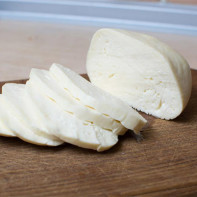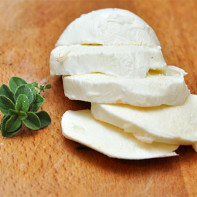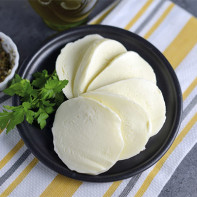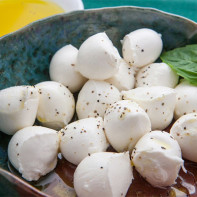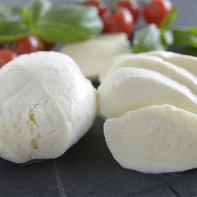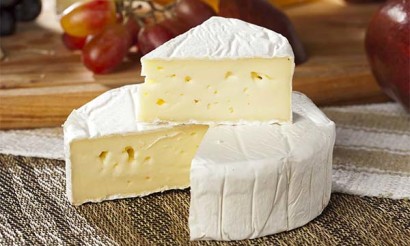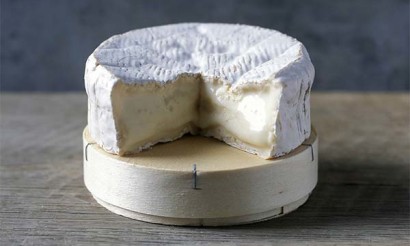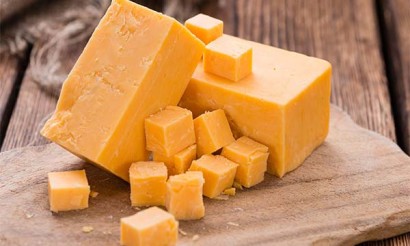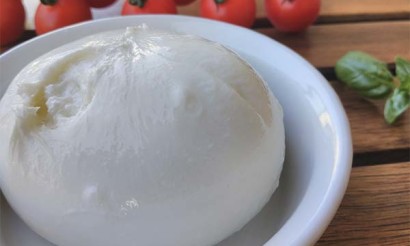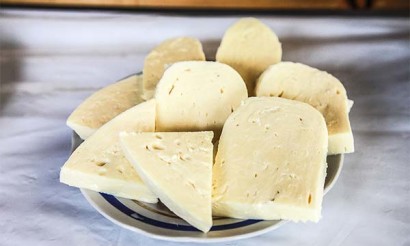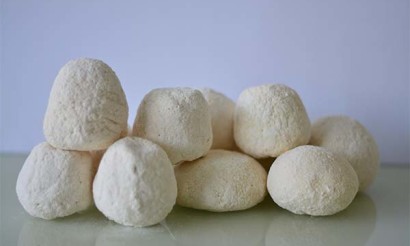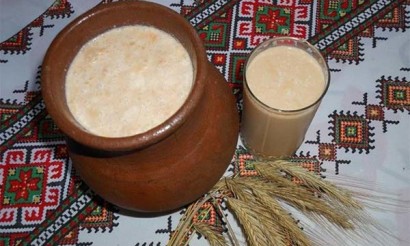Mozzarella cheese: composition, useful properties and contraindications.
Mozzarella is a culinary invention that has gained wide popularity among gourmets around the world. For more than 7 centuries, the cheese managed to go from a product used by pilgrims and nomads, to a dish, without the participation of which almost no festive event does not do.
- What is mozzarella
- Types
- What is the difference between mozzarella and suluguni
- Composition and calories
- What is mozzarella cheese good for?
- General benefits
- For Women
- For Men
- For Pregnancy
- For breastfeeding
- For children
- Slimming
- Mozzarella in Medicine
- Diabetes
- For pancreatitis
- For gastritis
- Hazards and contraindications
- How to choose and store mozzarella cheese
- Can I freeze it?
- How to Make Mozzarella at Home
- Why is the mozzarella not stretching?
- What to make with mozzarella
- Can I bake and fry it?
- What can be combined with?
- Can I drink brine from mozzarella?
- What can I substitute?
- Can I Eat Mozzarella Cheese During Lent
- Interesting Facts about Mozzarella
What is mozzarella
Mozzarella is a soft cheese that came to us from the south of sunny Italy. The word itself - "mozzarella" originated from a modified Neapolitan dialect, from which "mozzare" translates as "to cut off". In its homeland, it is most commonly used in the preparation of pizzas, salads, various appetizers and pastas. Mozzarella has a balanced, neutral flavor and a characteristic texture that allows it to stretch on a hot pizza. The flavor qualities of the cheese allowed such a dish as calzone to become extremely popular, and the light appetizer, caprese, to be born at all.
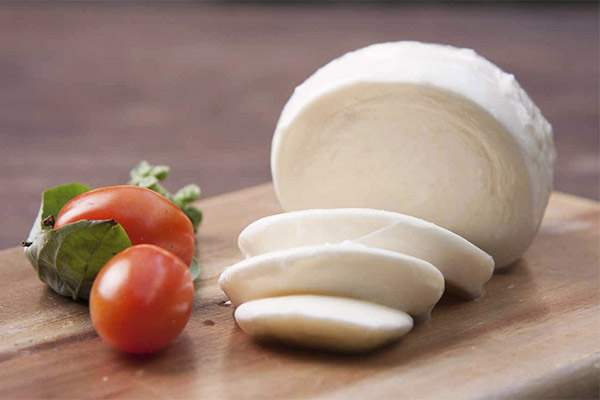
We should also express our gratitude to buffaloes, whose milk is used to prepare this wonderful and delicious product. The first mention of this Italian delicacy was shared with the world by the famous chef Bartolomeo Scappi, who lived in Renaissance Italy. In the second half of the 16th century he mentioned fresh mozzarella as an ingredient in his book "Opera". He probably did not give it much importance when he listed it among other products, which suggests that cheese was already perceived as the norm back then.
Types
According to the shape of the product it is usually divided into 4 types:
- Treccia - shaped like a pigtail.
- Perlini - in the form of small peas.
- Cillegini - small balls.
- Bocconcini - in the form of large balls.
Cheese is also classified according to its variety:
- Classic. Made only in Italy. The main raw material is buffalo milk.
- Unleavened. The main raw material is cow or goat milk.
- Skimmed. Non-creamy milk as a basic raw material.
- Smoked. Ready Ready-made product is subjected to smoking procedure.
What is the difference between mozzarella and suluguni?
Mozzarella has a white color, elastic consistency, has fibers, smoked varieties of the product can occur. Suluguni varies in color from light milky to yellowish-white, with a uniform color. There are no crusts on the cheese; layers can be seen. Mozzarella tastes bland and more delicate, the second type of cheese has a salinity. Also suluguni cheeses tend to have a sour milk flavor.
Composition and calories
In 100 g of the product contains:
- calories - 299 kcal;
- Protein - 22.2 g;
- fats - 22.1 g;
- carbohydrates - 2.4 g.
The composition of mozzarella is almost the same as that of any dairy product. The product is rich in saturated fatty acids, which have a positive effect on the skin, hair and nails. The cheese contains calcium, phosphorus, sodium and in large quantities - vitamin B12. In addition, it contains choline, phylloquinone, vitamin A, as well as iron, zinc, copper, selenium and manganese.
How is mozzarella cheese useful?
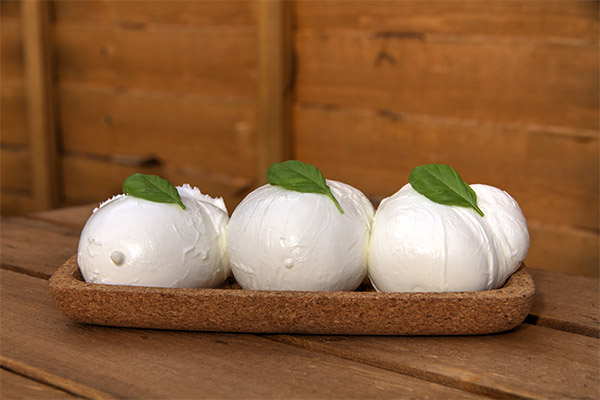
General benefits.
- Strengthens the immune system. One of the main reasons mozzarella is good for humans is the high protein content of the product. Protein is an essential macronutrient that the immune system, in particular, relies on. Antibodies used by the immune system to neutralize pathogenic bacteria and viruses are essentially proteins. In addition, cheese contains zinc in sufficient quantities. The average adult on a diet of 2,000 kcal per day will need about 11 mg of zinc, so just 100 grams of Italian delicacy will provide about 20% of the recommended daily intake of this mineral. Adequate intake of zinc helps the body stimulate immune system cells and keep neutrophils, macrophages and other types of white blood cells active. Deficiency of this mineral reduces immune system response and predisposes the body to infections. The product is enriched with various vitamins. For example, vitamin A together with zinc helps maintain the health of the skin and mucous membranes - the nose, mouth and throat, areas that are most susceptible to attack by viruses and bacteria.
- Supports and restores muscles. The protein found in mozzarella is essential for muscles. The amino acids that make it up help build and repair muscle tissue. Eating protein-rich foods can help build muscle mass while losing fat.
- Supports nervous system function. The amino acids in cheese help synthesize neurotransmitters and directly affect cognitive functions (memory, learning, thinking, attention) as well as mood, appetite, sleep and mental health in general. It is worth noting that the saturated fats present in the product do not have a negative impact on health if the rate of consumption is observed. It contains beneficial unsaturated fatty acids - omega-3, omega-6 and cholesterol, as well as vitamin B12. While omega-3 and -6 support brain function, cholesterol and vitamin B12 are part of the protective sheath that covers nerve fibers. Together they provide protection against degenerative diseases of the nervous system, such as multiple sclerosis.
- Benefits to humans for anemia. Vitamin B12 is responsible for the production of red blood cells, which transport oxygen to the muscles. Deficiency of this vitamin increases the risk of anemia, including symptoms such as pallor, shortness of breath, fatigue, heart palpitations, and low blood pressure. Mozzarella is rich in vitamin B12, with just 100 grams of the product containing 95% of the recommended daily dose.
- It fights fatigue and boosts energy. Mozzarella also helps to fight fatigue, satiates and energizes the body. It contains sodium, which helps to raise blood pressure to normal levels (if it was low before consumption). It also contains potassium, magnesium and calcium, three electrolytes that can balance blood pressure, which has an effect on heart health. The Italian delicacy is also rich in proteins and fats, substances that energize the body.
- It strengthens bones and teeth. Mozzarella is an excellent source of calcium and phosphorus. These substances help strengthen bones and teeth and prevent osteoporosis.
- It regulates blood pressure. When consumed in moderation, the product has a positive effect on the cardiovascular system and helps regulate blood pressure.
- Useful for the skin. Vitamin A and zinc, substances found in mozzarella, support the health of the skin and improve its appearance. Vitamin A helps in the treatment of dermatitis and other skin diseases due to its anti-inflammatory properties. In addition, thanks to its antioxidant properties, the vitamin slows down the appearance of wrinkles. Together with zinc, it fights acne and prevents various skin rashes.
- It also strengthens eyesight. Vitamin A, contained in cheese, supports the health of vision. It has a strong antioxidant effect that provides long-term benefits for retinal health.
For Women
Women are highly recommended to include mozzarella in their diet, because this product can act as an effective prevention against breast cancer. Besides, the cheese will help to avoid migraines and headaches. It is important for the modern woman to have enough energy in order to have time to perform all her duties. The substances contained in cheese will help the body to distribute energy more efficiently, while converting the accumulated fat into an additional source of it. It is also worth noting that it contains zinc, a substance that will help maintain healthy skin.
For men
Mozzarella is useful for men who are under constant mental strain. Cheese will help control brain functions and improve cognitive functions. The product will also have a favorable effect on the body of those who are actively engaged in sports. Feelings of muscle fatigue will be significantly reduced, while the body will be able to withstand more intense and prolonged exertion. Mozzarella is rich in protein, which will strengthen muscle tissue and fill with energy. Cheese also has the ability to reduce harmful cholesterol levels in the body. This, in turn, helps increase overall stamina.
In Pregnancy.
Mozzarella is among a number of foods that can be consumed during pregnancy. Pregnant women have an increased need for vitamin B12 because it helps support the development of the fetal circulatory system. In addition, the vitamin helps maintain energy levels and fights fatigue. Mozzarella also ensures the normal development of the brain and nervous system of the unborn child.
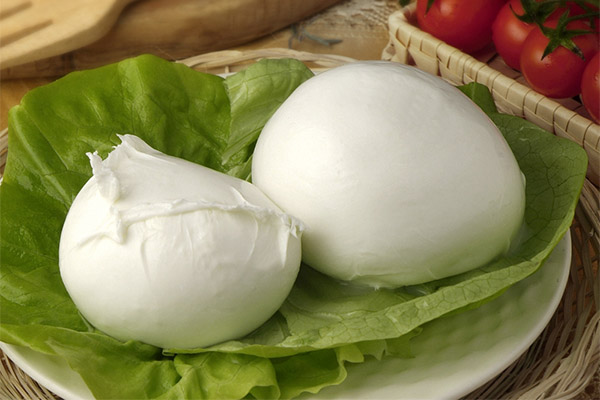
Even in spite of all the above beneficial properties of this product, it is necessary to ensure that the cheese is made from pasteurized milk, this is especially important during pregnancy. If it is made from pasteurized milk, then it is absolutely safe for consumption. Otherwise, pregnant women should exclude it from their diet, as there is a high risk of developing listeria, a disease that can lead to serious complications - miscarriage, stillborn fetus and premature birth. When buying, be sure to read the label carefully so that you know for sure if the product is pasteurized or not. When in a restaurant, it is advisable to ask the waiter what kind of cheese is used in the dish.
In the case of listeria, it is important to identify it at the earliest possible stage. This infection can go undetected for days or even weeks. Some of the symptoms are very similar to the flu, such as muscle pain, fever, diarrhea, and digestive discomfort. If left untreated, the disease can progress to a more dangerous phase, with severe headaches, cramps and cervical stiffness. In this case, you need to see a doctor immediately.
When breastfeeding.
Mozzarella is also allowed to be consumed during breastfeeding. The cheese will help to:
- improve the immune system;
- Strengthen the musculoskeletal system;
- strengthen the nervous system;
- maintain dental health.
It is worth noting that, in addition to the standard contraindications of the product, it has some features that may not have the best effect on the baby. Mozzarella can have a mild laxative effect, which will lead to digestive distress in the child. It is allowed to be included in the diet in the first month after birth. There are some rules to follow:
- At the first reception the portion should not exceed 20 g.
- On the day of the first intake, it is forbidden to include other new products in the diet.
- It is necessary to carefully monitor the condition of the baby. If digestive disorders or rashes on the skin occur, the product should be postponed for at least 30 days.
- Allowed to eat up to 50 grams of cheese a day.
- Cheese should not be eaten with meat. This can lead to the fact that the body will not be able to absorb some useful substances, and there will be problems with digestion.
For kids
Mozzarella is an excellent source of milk protein and calcium - substances that can be easily absorbed even by the immature body of the baby. It has very little salt and histamine, so the risk of allergies is low. Because of these properties, cheese is included in the list of foods that are excellent for baby food.
It is usually introduced from 10-11 months after birth. This helps to avoid an oversaturation of proteins and minerals in the child's body. It should be introduced in stages. The first time a child will have enough for one piece (about the size of a pea) a week. When a kid is a year old, grated cheese can already start to add to mashed potatoes and omelets (no more than 25 grams). At three years, the child's body will begin to produce enzymes that regulate digestion, so a baby can be given 1-2 pieces of mozzarella combined with honey or jam. You should choose a cheese no more than 10 days from the date of production. At the same time it should not contain preservatives, it should consist only of milk and sourdough.
When losing weight
It is possible to consume mozzarella when losing weight. However, you need to follow some rules. You should eat cheese in small quantities, and it is recommended to combine it with greens, vegetables, fruits or berries, but not with meat. It is quite caloric, but it has fewer calories than other cheeses. The substances in it are absorbed fairly quickly, so they will not slow down the weight loss process. The product will diversify the standard diet menu. However, it is prohibited for people suffering from glomerulonephritis, renal failure, gastric ulcer and high blood pressure. However, even in the absence of contraindications it is forbidden to eat stale cheese, as this can lead to serious health problems.
Mozzarella in medicine
Although mozzarella is not actively used in the field of medicine, this product can help in the prevention of many diseases. Cheese is allowed to eat during a period with various chronic diseases, which can not but rejoice people whose diet is usually very limited.
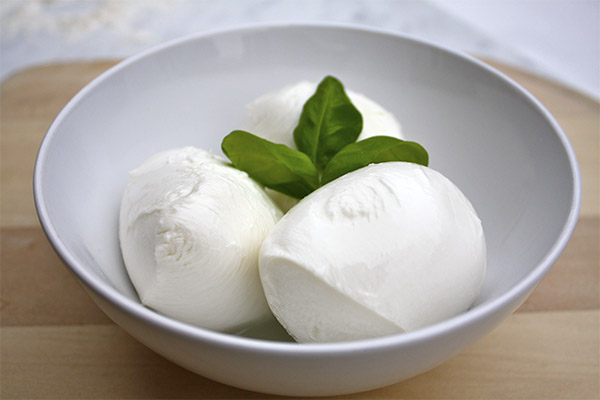
For diabetes
It is possible to consume mozzarella with diabetes. Cheese will fill the body's need for protein, as well as get rid of insomnia, improve digestion, which is very important for diabetics. When you have diabetes, you need to avoid foods that contain a lot of salt. There is not much salt in this cheese, so it can be included in the diet.
Important: The glycemic index of mozzarella cheese is 22 units.
In pancreatitis
It is allowed to include mozzarella in the therapeutic menu for pancreatitis. If you choose a quality cheese, it will only bring benefits. The proteins in it will support the restorative processes in the pancreas. They are also necessary for metabolism and digestion in general. In pancreatitis, salty, fatty, spicy and smoked cheeses are strictly forbidden.
With gastritis.
Like any other cheese, mozzarella is forbidden to eat during the exacerbation of the disease, especially in the first days. In this case, when the disease weakens, then you can gradually begin to add to the diet of the patient non-hard, non-smoked and unsalted cheeses. Italian delicacy suits these conditions, so you can eat it. In the remission phase, it will be useful to eat a fresh product, it will diversify the patient's menu and help saturate the body with necessary substances.
Harm and contraindications
Despite the fact that many consider mozzarella an absolutely safe product, there are still some restrictions regarding its consumption. For example, cheese is contraindicated in chronic glomerulonephritis and in high blood pressure (hypertension). Careful should be taken by people suffering from edema or renal failure.
Italian delicacy is strictly prohibited in cases of intolerance to milk protein, and you should not eat it even in small quantities, as severe allergic reactions (up to Quincke's edema) can occur.
How to choose and store mozzarella cheese
Quality cheese has a soft elastic texture and white color. The outside of the product should be smooth and the inside should be flaky. It is important that it is stored in brine, but some producers simply do not comply with this condition, which can lead to a bitter taste and a hard and dry consistency.
When choosing mozzarella, you need to analyze the label - the date of manufacture and expiration date. Usually an expired product tastes like sour milk. It is also worth paying attention to the integrity and quality of the packaging. If there is any damage or leaked brine, it is better not to take the cheese.
To preserve the product, you need to immerse it in brine and send it to the refrigerator. Here is how to do it:
- Find a glass container to the size of the cheese.
- Pour the brine and immerse the product in it so that it completely covers it.
- Place the container in the refrigerator.
- Can be kept in the fridge for up to 3 days.
Can I freeze?
It is possible to freeze the product, but this will only make sense if it is done correctly. It is important that it does not lose its qualities during freezing. Before freezing, the cheese should be placed for some time in water. This will prevent the product from losing its shape and turning into a cheese mass. Then you can put it in the freezer. In this form it can be stored for about 30 days. After this period, its structure will begin to change, it will lose its taste and useful properties.
When defrosting, leave the cheese for 2-3 hours on the top shelf of the refrigerator. This will allow it not to suffer from a sharp temperature drop.
How to make mozzarella at home
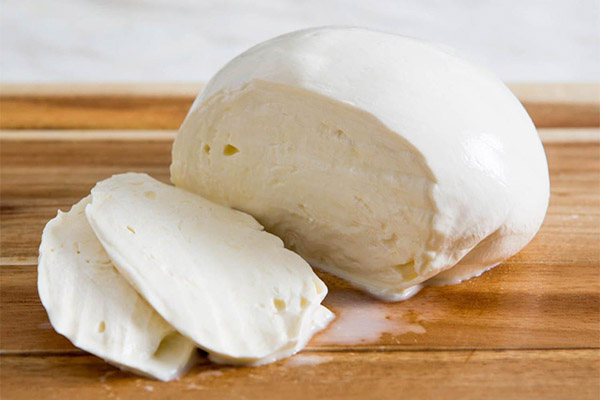
Ingredients:
- milk - 4,5 liters;
- water - 300 ml;
- citric acid - 1,5 tsp;
- rennet - 0,25 tsp;
- salt - 1 tsp.
Instrumentation:
- enameled saucepan (for 6 liters);
- spoon;
- cup;
- precision thermometer;
- a slottedottedottedottedottedottedottedottedotted swab and gauze;
- sharp knife;
- gloves (rubber gloves).
How to prepare:
- Dissolve citric acid in 200 ml water (cold), rennet in 100 ml water.
- Pour the milk into a saucepan and put on the fire (to 33°C), stirring, pour in the citric acid (if the milk does not evaporate, heat to 37°C).
- Remove the pot from the heat and, stirring the milk, pour in the enzyme a little at a time. When the enzyme is finished, count to 30 while stirring the mixture, then put the lid on and leave for 5 minutes.
- Check to see what is in the pot. If the mass is similar to the custard, the borders of the whey are clearly visible, then you can go to the next step. If this does not happen, then cover the bowl with a lid and wait another 5 minutes.
- Cut the clot into several pieces.
- Heat the mass again to 40-41°C. Remove from the stove and stir for about 5 minutes.
- Separate the curd from the whey with a strainer (cover it with several layers of gauze). Put the clot in a microwave-safe bowl and heat for about half a minute. Put on gloves, using a thermometer, check the temperature, it has to be 60 ° C (if it is less, you need to repeat the heating procedure).
- Carefully stretch the rest of the mass and form it into one big ball or balls. Squeeze the mass in your hands and roll it out until it has a glossy sheen.
- Salt the cold whey, put the balls in it and leave in the refrigerator. Store for a few days at most.
Why mozzarella doesn't stretch
If the mozzarella does not stretch, it indicates that the necessary level of acidity has not been reached. This usually happens when not enough citric acid is added to the dish during cooking.
What you can make with mozzarella
Mozzarella is a mandatory component of a large number of traditional Italian dishes. It is used in various casseroles, pizzas, lasagnas and pies. Italians can eat the cheese both as a dessert and as an accompaniment to pasta, vegetable and meat hot dishes.

Can it be fried or baked?
Mozzarella can be both fried and baked. However, both are considered traditional processing methods. Roasted and baked cheese makes very simple and delicious appetizers.
How to combine with
Cheese goes well with basil and tomatoes, as well as with wine (white). It is quite acceptable to add ham or olives to it. In Italy, cheese desserts are often accompanied by vermouth and berries.
Can you drink brine from mozzarella?
As a rule, brine is not drunk, but used to bake bread, because it makes the dough more delicious.
What can be substituted
Usually there are 4 types of cheeses with which you can replace mozzarella:
- brynza;
- adygeyan cheese;
- suluguni;
- Grain cheese.
Is it possible to eat mozzarella cheese during Lent?
It is forbidden to eat cheeses, including mozzarella, during Lent.
Interesting facts about mozzarella
- Mozzarella di Bufala Campana cheese is considered the best. The product is made from black buffalo milk. It is distinguished by its special elasticity and white and porcelain color. It is important to note that it is made by hand.
- Mozzarella is not always made in the form of balls.
- The highest quality cheeses are those of the DOP category. They are quite easy to recognize, because the red-green logo shows the face of a buffalo.
- Mozzarella, derived from cow's milk, is called "Fior di Latte. Some dairies, consortia and pizza makers still use this old-fashioned term.
«Important: All information on this site is provided for informational purposes only for informational purposes only. Consult a health care professional before applying any recommendations. pizza chef before using those recommendations. Neither the editors nor the authors shall be liable for any possible harm caused by materials."

